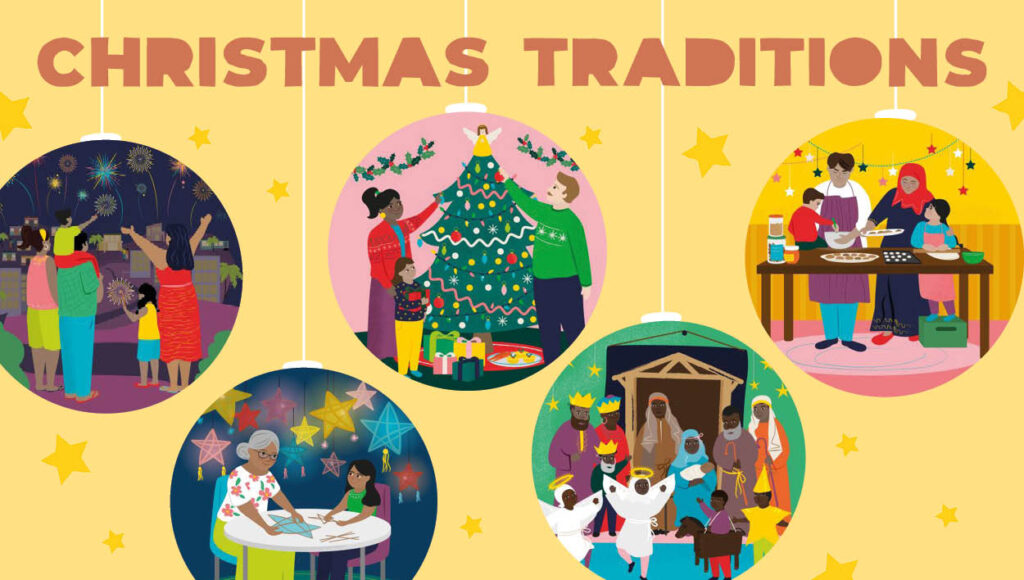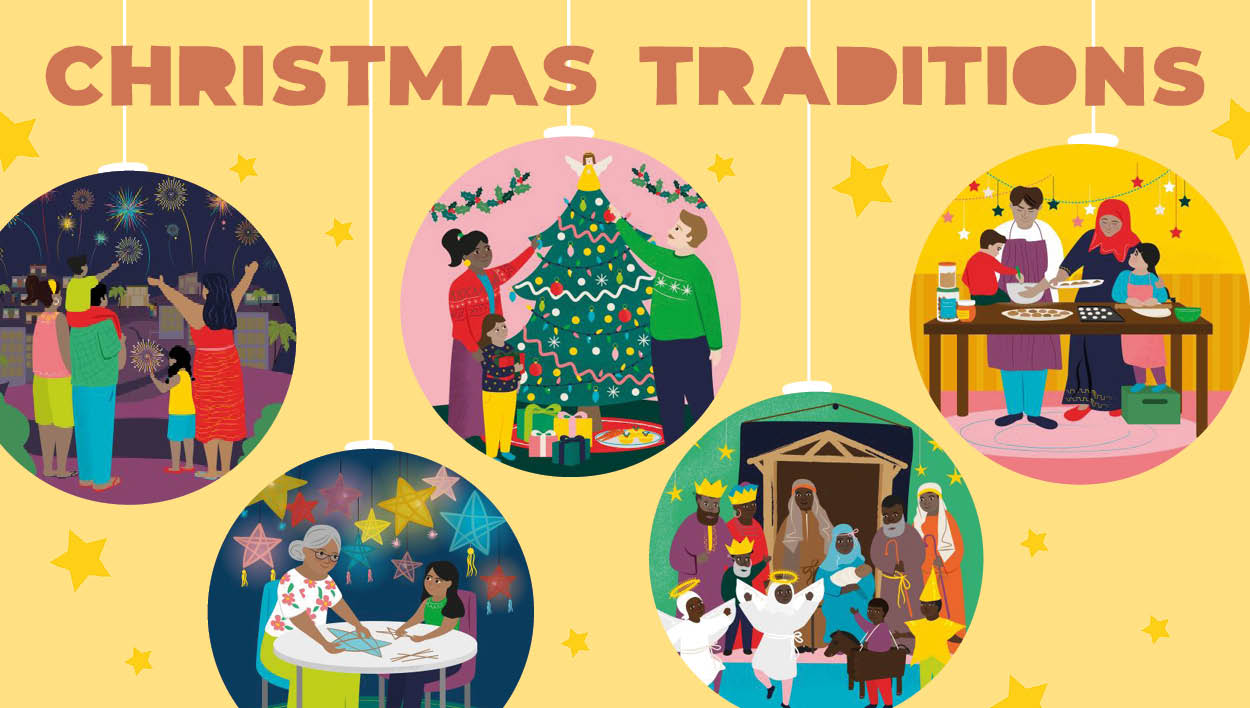
Unwrapping the Magic: 5 Enduring Christmas Traditions Around the World
Christmas, a globally celebrated holiday, is more than just twinkling lights and gift-giving. It’s a tapestry woven with diverse cultural threads, each tradition adding a unique hue to the festive season. While the core message of peace and goodwill remains universal, the ways in which it’s expressed vary dramatically across the globe. Let’s unwrap five enduring Christmas traditions that illuminate the rich diversity of this beloved holiday.
The Gift of Light: Christmas Trees and Decorations
The Christmas tradition of adorning evergreen trees dates back centuries, with roots in pagan winter solstice celebrations. These evergreens symbolized life and hope during the darkest days of the year. In modern times, the Christmas tree has become a central symbol of the holiday, decorated with lights, ornaments, and topped with a star or angel.
Beyond the tree, Christmas decorations transform homes and public spaces into winter wonderlands. From twinkling fairy lights to elaborate nativity scenes, these adornments contribute to the festive atmosphere and evoke a sense of joy and nostalgia. The act of decorating itself is often a cherished family activity, strengthening bonds and creating lasting memories. The use of specific colors, like red and green, also ties into the symbolism of the season, representing life, hope, and the blood of Christ for some.
A Feast for the Senses: Christmas Food and Drink
Food plays a pivotal role in Christmas celebrations worldwide. From elaborate feasts to simple treats, culinary traditions vary greatly depending on regional customs and cultural influences. In many Western countries, the centerpiece of the Christmas dinner is a roasted turkey or ham, accompanied by stuffing, mashed potatoes, gravy, and cranberry sauce. [See also: Delicious Christmas Recipes]
Sweet treats are equally important, with gingerbread cookies, mince pies, and Yule logs being popular choices. Beverages like mulled wine, eggnog, and hot chocolate add warmth and cheer to the festivities. The sharing of food and drink is a symbol of hospitality and generosity, reinforcing the spirit of community and togetherness during the holiday season. In Italy, the Christmas tradition includes panettone, a sweet bread loaf filled with candied fruits and raisins.
The Joy of Giving: Gift-Giving Customs
The Christmas tradition of gift-giving is rooted in the story of the Three Wise Men who brought gifts to the baby Jesus. Today, exchanging presents is a widespread custom, symbolizing love, appreciation, and generosity. The anticipation of receiving gifts, especially for children, is a major part of the Christmas experience.
While the types of gifts vary widely, the act of giving is often more important than the material value of the present. Thoughtful gifts that reflect the recipient’s interests and needs are particularly cherished. In some cultures, gift-giving is a more formal affair, with specific etiquette and customs to be observed. Secret Santa exchanges and charitable donations are also popular ways to embrace the spirit of giving during Christmas. This Christmas tradition helps to spread cheer and build stronger relationships.
Melodies of the Season: Christmas Carols and Music
Music is an integral part of the Christmas experience, with carols and festive songs filling the airwaves and public spaces. Singing Christmas carols is a long-standing tradition, dating back to the Middle Ages. These songs often tell the story of the Nativity or celebrate the joy and peace of the season. [See also: The History of Christmas Carols]
From traditional hymns to modern pop songs, Christmas music evokes a sense of nostalgia and cheer. Caroling groups often visit homes and hospitals, spreading holiday cheer through song. Attending Christmas concerts and performances is another popular way to enjoy the music of the season. The melodies of Christmas create a festive atmosphere and remind us of the hope and joy associated with the holiday.
A Visit from Saint Nicholas: The Legend of Santa Claus
The legend of Santa Claus, also known as Saint Nicholas, is a beloved Christmas tradition, particularly for children. Based on a historical figure known for his generosity and kindness, Santa Claus has evolved into a mythical figure who delivers gifts to children on Christmas Eve. The image of Santa Claus, with his red suit, white beard, and reindeer-pulled sleigh, is a ubiquitous symbol of the holiday.
Children often write letters to Santa, expressing their wishes for Christmas. The anticipation of Santa’s visit adds to the excitement and magic of the season. Leaving out milk and cookies for Santa is a common custom, as is tracking Santa’s journey on Christmas Eve using online tools. The Santa Claus tradition fosters a sense of wonder and imagination, making Christmas a truly special time for children. This Christmas tradition is all about the spirit of giving and the magic of believing.
Conclusion: The Enduring Appeal of Christmas Traditions
These five Christmas traditions represent just a small fraction of the diverse customs and celebrations that take place around the world. While the specific practices may vary, the underlying themes of peace, goodwill, and generosity remain constant. Christmas is a time for families and communities to come together, share joy, and celebrate the spirit of the season. The enduring appeal of Christmas traditions lies in their ability to connect us to the past, strengthen our bonds with loved ones, and remind us of the values that are most important. As we continue to celebrate Christmas, let us cherish these traditions and create new memories that will last a lifetime.
Embracing these Christmas traditions allows us to connect with the past and build a more meaningful future. The Christmas season is a time for reflection, gratitude, and spreading joy. From the simple act of decorating a tree to the grand gesture of giving gifts, each Christmas tradition contributes to the magic of the holiday. Let us continue to cherish and celebrate these enduring customs for generations to come.

